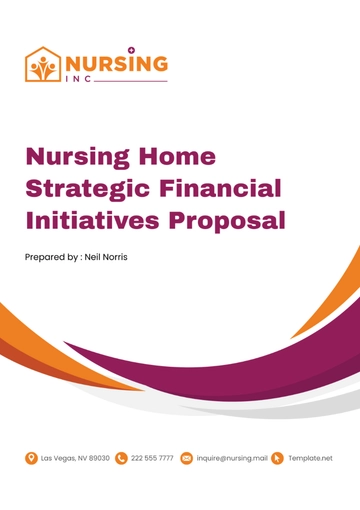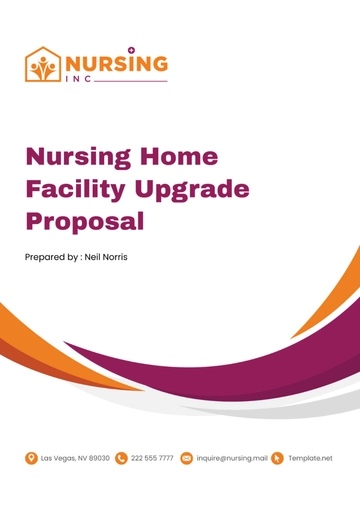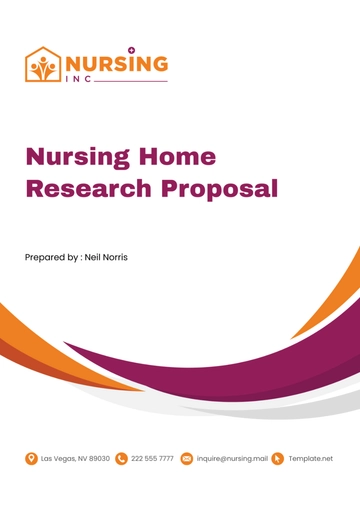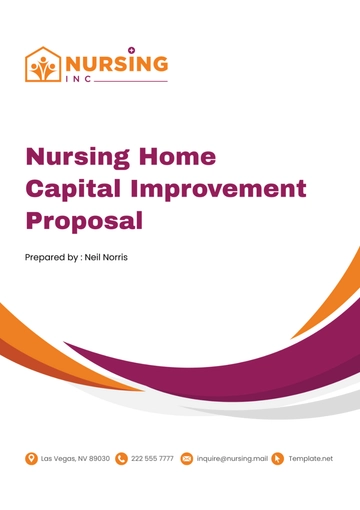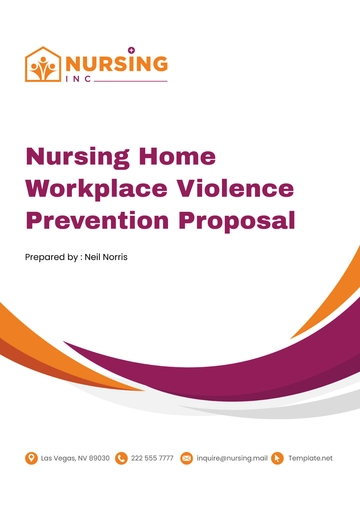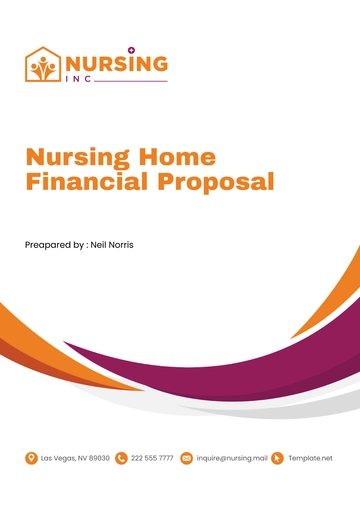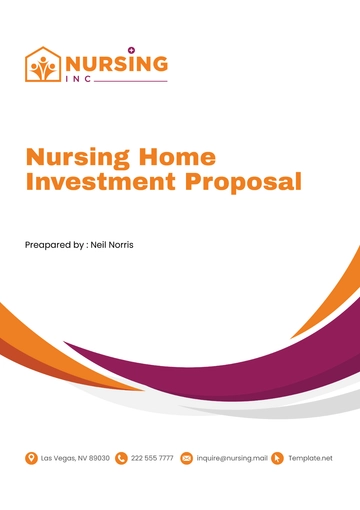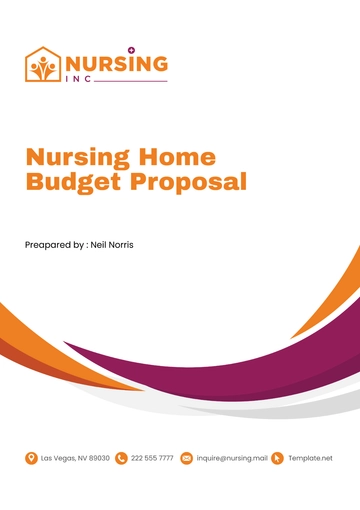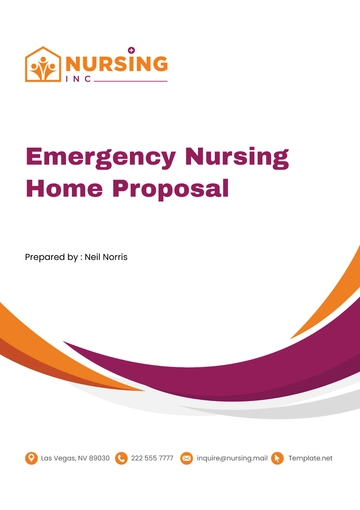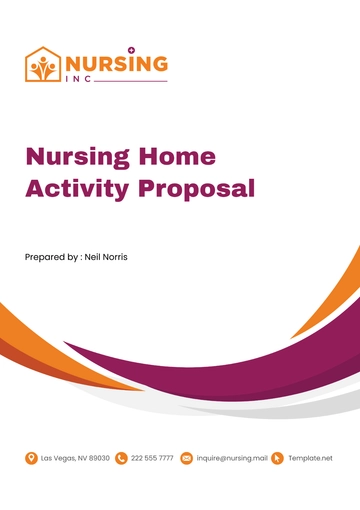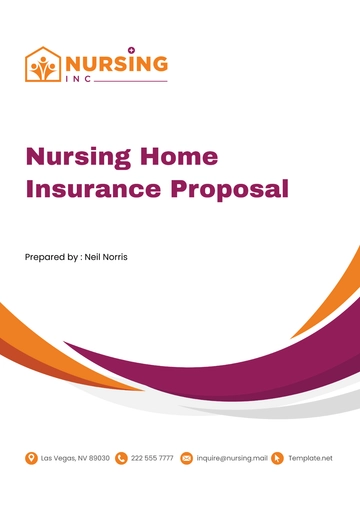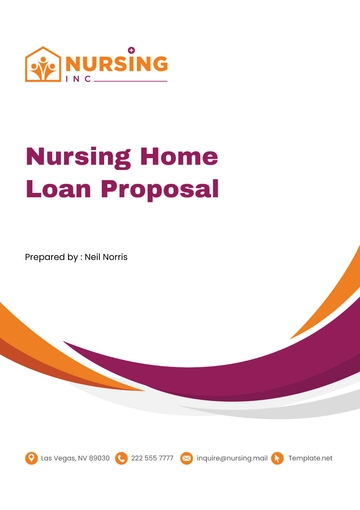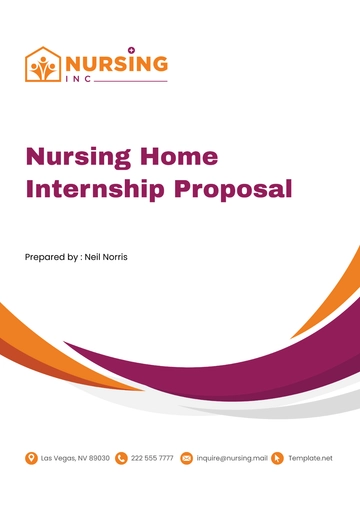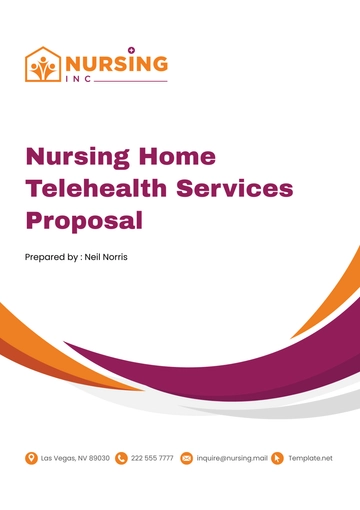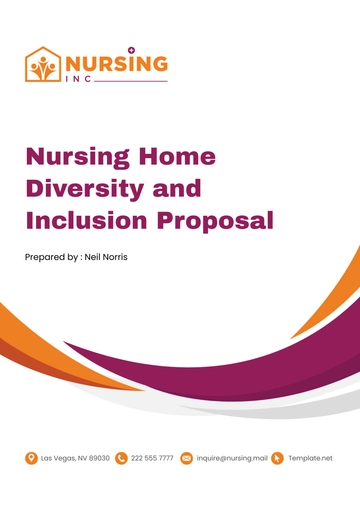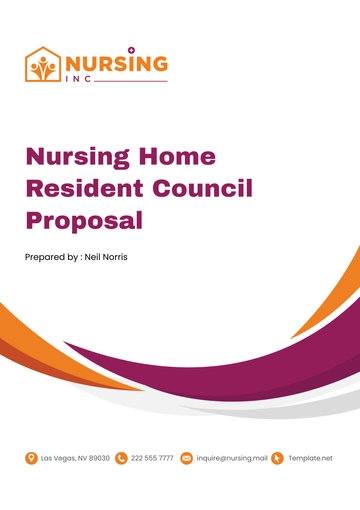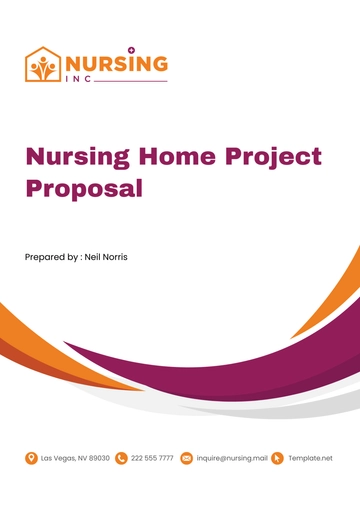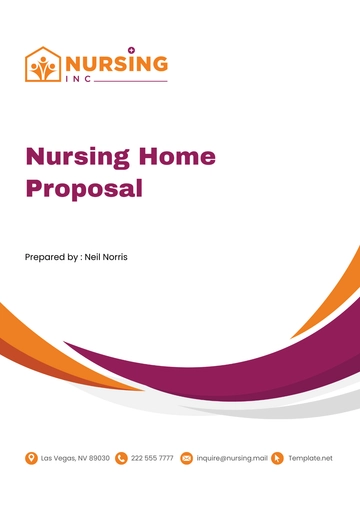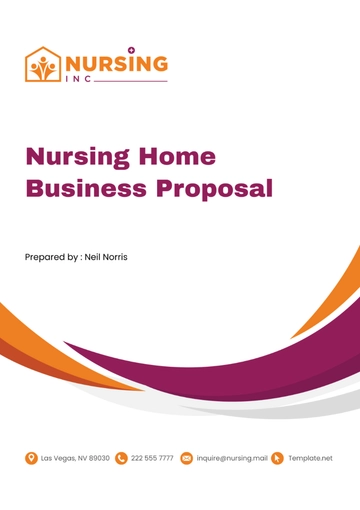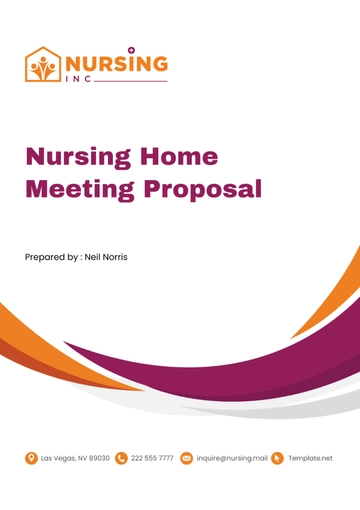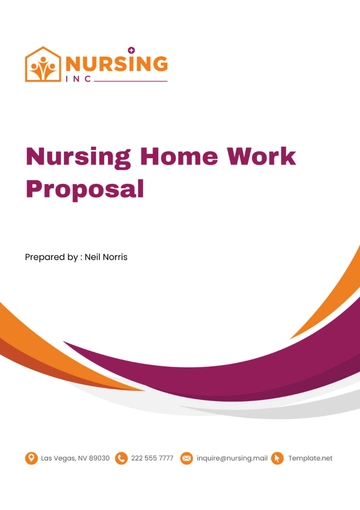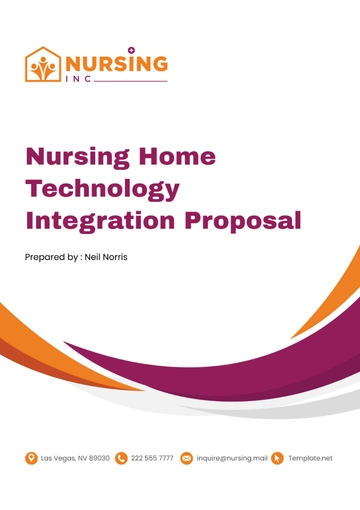Free Nursing Home Project Proposal
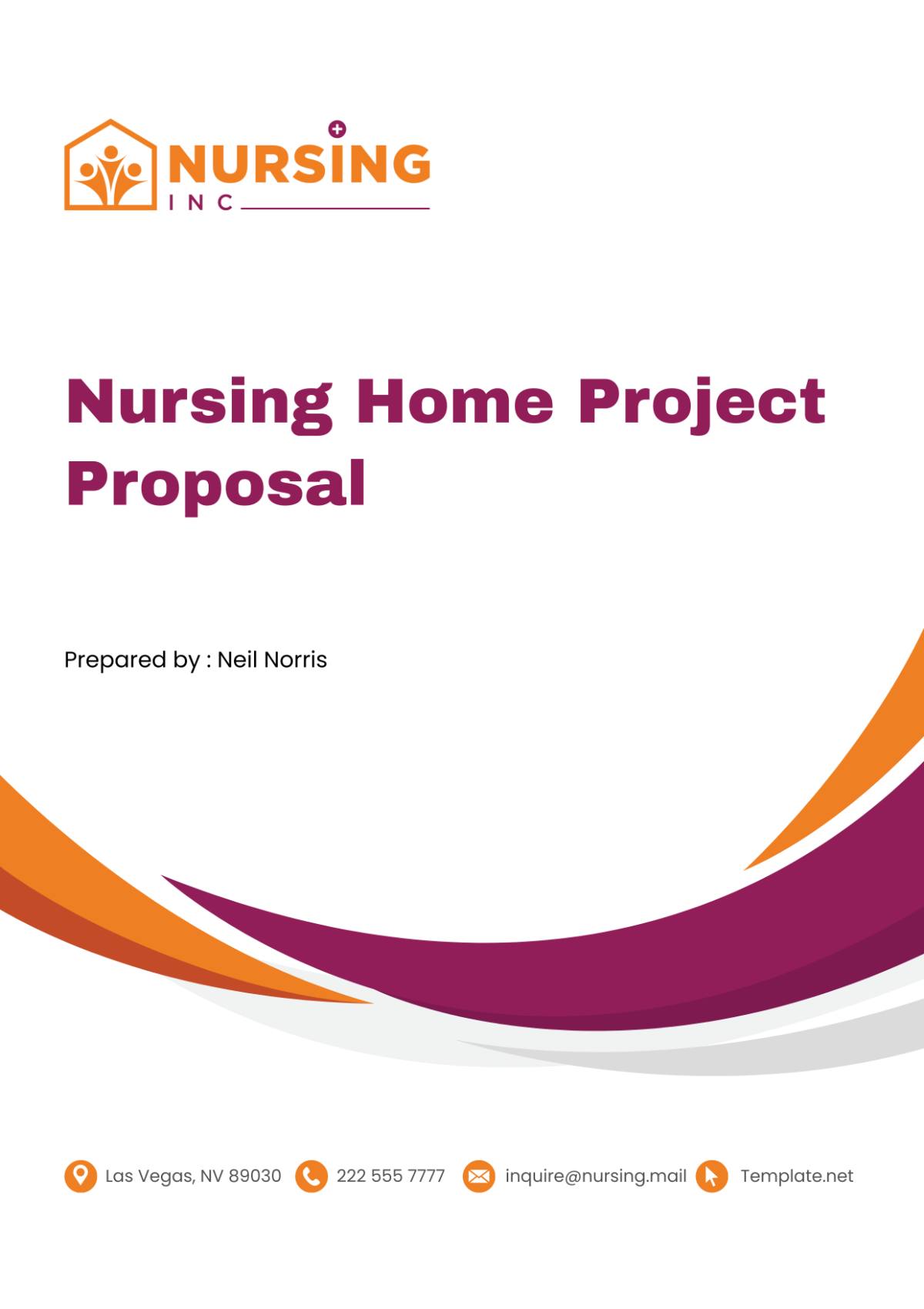
I. Introduction
A. Rationale
The increasing aging population is not just a demographic trend but a societal shift requiring proactive responses. Our community, like many others, faces the challenge of providing adequate care and support to its elderly members. Establishing a modern nursing home facility is crucial to address this need effectively and ensure that our seniors receive the respect, dignity, and quality of life they deserve in their later years.
B. Purpose
This proposal has been crafted with the specific objective to draw out a detailed and all-encompassing plan for the establishment and development of a nursing home facility. However, our vision goes beyond just providing a basic living accommodation for the elderly. Instead, our perspective embraces a more holistic methodology towards care for the elderly. This includes a comprehensive strategy that caters to their physical well-being, mental well-being and emotional wellness. The core ethos of our proposed nursing home facility is associated with fostering a living environment that is replete with compassion, respect for individual autonomy, and personalized support for each resident. It is our steadfast belief that an atmosphere imbued with such characteristics significantly contributes towards making the elderly feel valued, respected and cared for.
Informed by this belief, it is our intention to redefine the conventional understanding and concept of nursing homes. Rather than simply being viewed as elderly care institutions, we envision them as lively, vibrant communities that facilitate interactions, engagements and activities amongst the residents.
In such dynamic communities, residents have the potential to not only live but also thrive, grow and continue to lead lives that are both fulfilling and meaningful. To this end, our proposal will present strategies and plans to transform this vision into a tangible reality.
II. Background
A. Demographic Trends
A comprehensive analysis of our community's data has brought to light a remarkable demographic shift that is taking place. What we are witnessing is a projected considerable increase in the population of the elderly in the years that lie directly ahead of us. This observed trend within our demographic profile is not without significant implications and underlines a pressing need that we are confronted with. It brings to our attention the urgent need to strengthen our commitment towards the support and care of our elderly population by investing in an increase in the number of long-term care facilities. These establishments will not only need to provide residence but also accommodate the unique, varying needs of individuals in their advancing age.
Furthermore, it is important that these care facilities are designed to offer an array of specialized services that have been specifically tailored to meet the exclusive requirements of the elderly individuals they will be home to.
Demographic Trends | The elderly population (aged 65 and above) in our community has been steadily increasing over the past decade. |
Projections indicate that this trend will continue, with the elderly population expected to double by [2050]. |
B. Healthcare Needs
Elderly individuals often experience a range of health challenges, from chronic conditions to cognitive decline, necessitating access to specialized medical care and supportive services. A comprehensive nursing home facility can address these needs by offering round-the-clock nursing supervision, rehabilitative therapies, and personalized care plans tailored to each resident's specific health status and preferences.
C. Assessment of Existing Facilities
While there are nursing home facilities currently operating in our community, a critical examination reveals gaps in service provision and quality of care. These facilities may be limited in capacity or lack specialized programs to address the needs of residents with complex medical conditions or cognitive impairments. By identifying these shortcomings, we can tailor our proposal to fill these gaps effectively and enhance the overall standard of care for our elderly population.
III. Project Objectives
A. Primary Objectives
Our primary objectives encompass not only the establishment of a physical facility but also the creation of a supportive community where residents can age with dignity and purpose. By prioritizing person-centered care, we aim to empower residents to make choices about their daily lives, participate in meaningful activities, and maintain their independence to the fullest extent possible.
B. Secondary Objectives
In addition to meeting the immediate needs of our residents, we aspire to foster collaboration and partnerships with local healthcare providers, community organizations, and government agencies. By working together, we can create a seamless continuum of care that ensures residents receive the necessary support throughout their healthcare journey, from admission to discharge and beyond.
IV. Scope of Work
A. Facility Design
The design plan for the nursing home facility will place maximum attention and importance on comfort, safety, and accessible features to accommodate residents, regardless of their physical abilities and capabilities. It will feature spacious room accommodations with furnishings that can be adjusted to the need of individual residents. This consideration in design is aimed to make every resident feel comfortable and as much at home as possible. In the same vein, barrier-free pathways will be integrated into the entire facility's layout.
The objective here is to minimize restrictions in movement, regardless of whether a resident is walking unaided, using a wheelchair, or relying on a walker for mobility. To further support this, advanced assistive technologies that facilitate independent movement and eliminate needless reliance on nursing staff will be installed where necessary. All of these endowed features in the nursing home are planned to promote a sense of independence among residents and provide ease of movement for those with mobility impairments.
B. Service Offerings
In addition to essential medical care and assistance with activities of daily living, the nursing home will offer a range of recreational and therapeutic activities to enhance residents' quality of life. These may include art therapy, music therapy, pet therapy, and intergenerational programs that promote social interaction, cognitive stimulation, and emotional well-being.
V. Project Plan
A. Planning and Design Phase
During the planning and design phase, we will engage with architects, interior designers, and healthcare consultants to develop a detailed blueprint for the nursing home facility. Input from residents, families, and staff members will be solicited to ensure that the design reflects their preferences and meets their needs effectively.
B. Construction Phase
The construction phase will involve the selection of contractors and subcontractors with experience in healthcare facility construction and adherence to strict quality standards. Regular site inspections and progress reports will be conducted to monitor construction milestones and ensure compliance with project timelines and budgetary constraints.
VI. Budget
A. Construction Costs
Construction costs will encompass expenses related to site preparation, building materials, labor, equipment, and permits. A detailed cost estimate will be developed based on competitive bids from reputable contractors and adjusted as needed to account for unforeseen contingencies.
B. Operational Expenses
Operational expenses will include staffing costs, utilities, maintenance, supplies, insurance, and administrative overhead. Projections will be based on industry benchmarks and anticipated occupancy rates, with provisions for ongoing monitoring and adjustment as the facility becomes operational.
Budget Category | Description | Estimated Cost ($) |
|---|---|---|
Construction Costs | Expenses related to site preparation, building materials, labor, equipment, and permits | $[00] |
Operational Expenses | Ongoing costs for staffing, utilities, maintenance, supplies, insurance, and administrative overhead | $[00]/year |
Equipment and Supplies | Procurement of medical equipment, furniture, technology, and other necessary supplies | $[00] |
Staff Training | Cost of training programs and professional development initiatives for nursing and support staff | $[00] |
Contingency Fund | Reserve fund for unforeseen expenses and cost overruns | $[00] |
Total Budget | $[00] |
VII. Funding Plan
A. Grant Opportunities
We will actively seek funding opportunities from government agencies, private foundations, and philanthropic organizations that support initiatives aimed at improving senior care and healthcare infrastructure. Grant applications will be carefully prepared and tailored to align with the specific goals and objectives of the Nursing Home Project.
B. Private Financing
Private financing options, such as bank loans, lines of credit, or investments from accredited investors, may be explored to supplement grant funding and provide additional capital for the project. Financial projections and risk assessments will be conducted to ensure that the proposed financing arrangements are feasible and sustainable in the long term.
C. Community Support
Community support will be essential in mobilizing resources and rallying public enthusiasm for the Nursing Home Project. Outreach efforts will include public awareness campaigns, fundraising events, volunteer opportunities, and engagement with local businesses, schools, and civic organizations to garner support and build momentum for the initiative.
VIII. Benefits and Impact
A. Enhanced Quality of Life
By providing a nurturing and supportive environment, the nursing home facility will significantly enhance the quality of life for elderly residents. Access to personalized care plans, enriching activities, and social connections will promote emotional well-being, mental stimulation, and overall satisfaction with daily living.
B. Economic Stimulus
The establishment of the nursing home facility will stimulate economic growth by creating jobs, supporting local businesses, and generating tax revenue for the community. Additionally, increased demand for goods and services associated with senior care will contribute to overall economic vitality, fostering a positive cycle of prosperity and growth.
C. Social Cohesion
The nursing home facility will serve as a focal point for social interaction, cultural enrichment, and intergenerational exchange within the community. By fostering meaningful connections between residents, families, staff members, and volunteers, the facility will promote social cohesion, reduce isolation, and create a sense of belonging for all stakeholders involved.
IX. Risk Assessment
A. Regulatory Compliance
Ensuring compliance with federal, state, and local regulations governing nursing home operations is essential to mitigate legal and financial risks. A dedicated compliance team will oversee adherence to licensing requirements, safety standards, infection control protocols, and resident rights to prevent potential liabilities and safeguard the well-being of residents.
B. Financial Risks
Financial risks, including cost overruns, revenue shortfalls, and fluctuations in reimbursement rates, may impact the project's financial sustainability. A thorough risk assessment will identify potential financial challenges and inform risk mitigation strategies, such as contingency planning, revenue diversification, and prudent financial management practices.
C. Operational Challenges
Operational challenges, such as staff turnover, resident acuity levels, and changes in market demand, may pose obstacles to the efficient operation of the nursing home facility. Proactive measures, such as staff retention initiatives, cross-training programs, and flexible staffing models, will be implemented to address these challenges and ensure continuity of care for residents.
X. Evaluation Plan
A. Performance Metrics
Key performance indicators, including resident satisfaction scores, occupancy rates, clinical outcomes, and financial performance metrics, will be monitored regularly to assess the effectiveness of the nursing home facility. Data-driven insights will inform decision-making and guide continuous improvement efforts to optimize resident care and organizational performance.
B. Stakeholder Feedback
Ongoing feedback from residents, families, staff members, and community partners will be solicited through surveys, focus groups, and town hall meetings. Transparent communication channels will be established to encourage open dialogue, address concerns, and incorporate stakeholder input into decision-making processes, fostering a culture of collaboration and accountability.
C. Quality Improvement Initiatives
Continuous quality improvement initiatives will be implemented based on data-driven insights and best practices in geriatric care, rehabilitation services, and customer service excellence. Multidisciplinary quality improvement teams will be tasked with identifying opportunities for enhancement, implementing evidence-based interventions, and evaluating outcomes to ensure that the nursing home facility delivers the highest standard of care.
XI. Conclusion
To wrap things up, it is our belief that the Nursing Home Project is a significant and transformative venture that is tailored to serve the changing requirements of our growing elderly population. The project is designed to create an environment that offers support and care for our elderly citizens. It empowers the older generation to live their life with dignity, autonomy, and purpose. This results from the core belief that our elderly community deserves quality assistance and autonomy, which we instill in every aspect of our Nursing Home Project. This initiative further concentrates on utilizing innovation and taking advantage of collaborating ideas from various resources, keeping in line with our unchanging commitment to provide excellence in all we do. We firmly hold that undergoing significant strides in these areas will produce a meaningful difference in the lives of our residents, as we treat each individual in our care as esteemed members of the community. Furthermore, we equip ourselves with the understanding that with every accomplishment and breakthrough that the Nursing Home Project achieves, we are significantly elevating the overall health and vitality of our community. Patient well-being, innovation, and excellence form the pillars of our project. By investing in these values, we remain hopeful that we can bring about the necessary changes and have a lasting positive impact on the community we serve – paving the way for a healthier and happier environment for our elderly populace and future generations to come.
- 100% Customizable, free editor
- Access 1 Million+ Templates, photo’s & graphics
- Download or share as a template
- Click and replace photos, graphics, text, backgrounds
- Resize, crop, AI write & more
- Access advanced editor
Discover the ultimate solution for crafting your Nursing Home Project Proposal with Template.net's editable and customizable template. Seamlessly tailor your proposal to fit your needs using our intuitive AI Editor Tool. Effortlessly navigate through sections, making adjustments with ease. Elevate your proposal game with our comprehensive template, designed to streamline your process and impress stakeholders.
You may also like
- Business Proposal
- Research Proposal
- Proposal Request
- Project Proposal
- Grant Proposal
- Photography Proposal
- Job Proposal
- Budget Proposal
- Marketing Proposal
- Branding Proposal
- Advertising Proposal
- Sales Proposal
- Startup Proposal
- Event Proposal
- Creative Proposal
- Restaurant Proposal
- Blank Proposal
- One Page Proposal
- Proposal Report
- IT Proposal
- Non Profit Proposal
- Training Proposal
- Construction Proposal
- School Proposal
- Cleaning Proposal
- Contract Proposal
- HR Proposal
- Travel Agency Proposal
- Small Business Proposal
- Investment Proposal
- Bid Proposal
- Retail Business Proposal
- Sponsorship Proposal
- Academic Proposal
- Partnership Proposal
- Work Proposal
- Agency Proposal
- University Proposal
- Accounting Proposal
- Real Estate Proposal
- Hotel Proposal
- Product Proposal
- Advertising Agency Proposal
- Development Proposal
- Loan Proposal
- Website Proposal
- Nursing Home Proposal
- Financial Proposal
- Salon Proposal
- Freelancer Proposal
- Funding Proposal
- Work from Home Proposal
- Company Proposal
- Consulting Proposal
- Educational Proposal
- Construction Bid Proposal
- Interior Design Proposal
- New Product Proposal
- Sports Proposal
- Corporate Proposal
- Food Proposal
- Property Proposal
- Maintenance Proposal
- Purchase Proposal
- Rental Proposal
- Recruitment Proposal
- Social Media Proposal
- Travel Proposal
- Trip Proposal
- Software Proposal
- Conference Proposal
- Graphic Design Proposal
- Law Firm Proposal
- Medical Proposal
- Music Proposal
- Pricing Proposal
- SEO Proposal
- Strategy Proposal
- Technical Proposal
- Coaching Proposal
- Ecommerce Proposal
- Fundraising Proposal
- Landscaping Proposal
- Charity Proposal
- Contractor Proposal
- Exhibition Proposal
- Art Proposal
- Mobile Proposal
- Equipment Proposal
- Student Proposal
- Engineering Proposal
- Business Proposal
